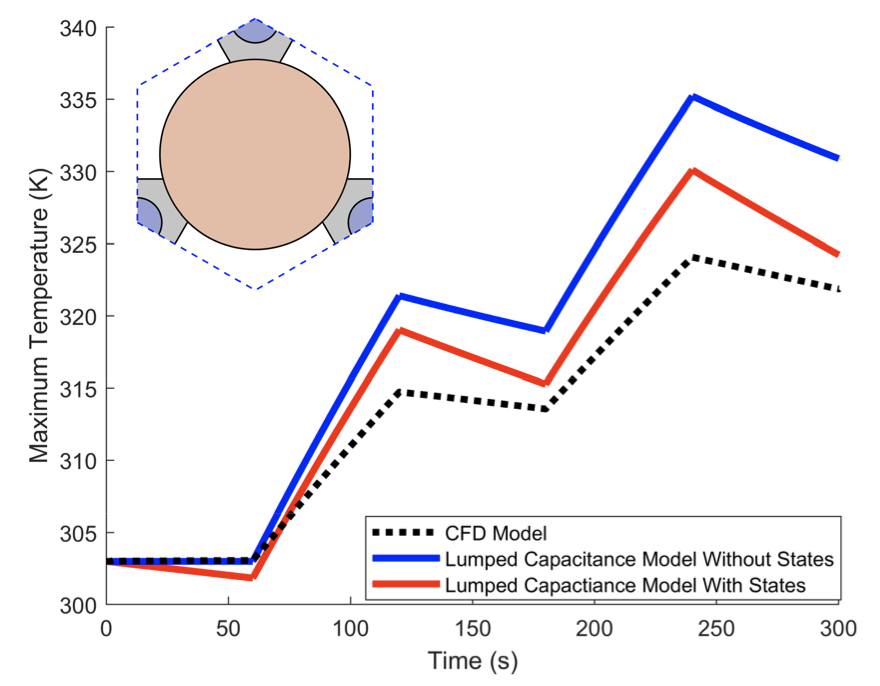Nowsheen Sharmili presented “Battery thermal management systems design considering model fidelity levels and design optimization utility” at the AIAA SciTech Forum 2024.
[BibTeX]
Abstract
The electrification of transportation requires a robust and efficient design of battery thermal management systems (BTMSs). This study introduces a resistance-capacitance (RC) based reduced order model (ROM) with additional auxiliary state variables for accurately capturing transient thermal behavior. The study explores the trade-offs between model fidelity and utility in BTMS control co-design (CCD) applications. BTMSs manage the temperature to ensure battery performance, safety, and longevity. Although computational fluid dynamics (CFD) is useful in steady and transient battery thermal analysis, full-fidelity CFD simulations are computationally expensive, particularly within CCD optimization loops. RC-based ROMs commonly used in early-stage design can mitigate the computational effort. These models can be formulated at different fidelity levels by representing various battery components as single or multiple LC bodies connected by resistance elements. The proposed augmented RC-based ROM enhances transient simulation accuracy while maintaining low computational cost, thereby, facilitating thorough design exploration using the CCD approach. This study focuses on comparing model fidelity levels, and their quantifiable utility measures, such as design accuracy and computational cost.
